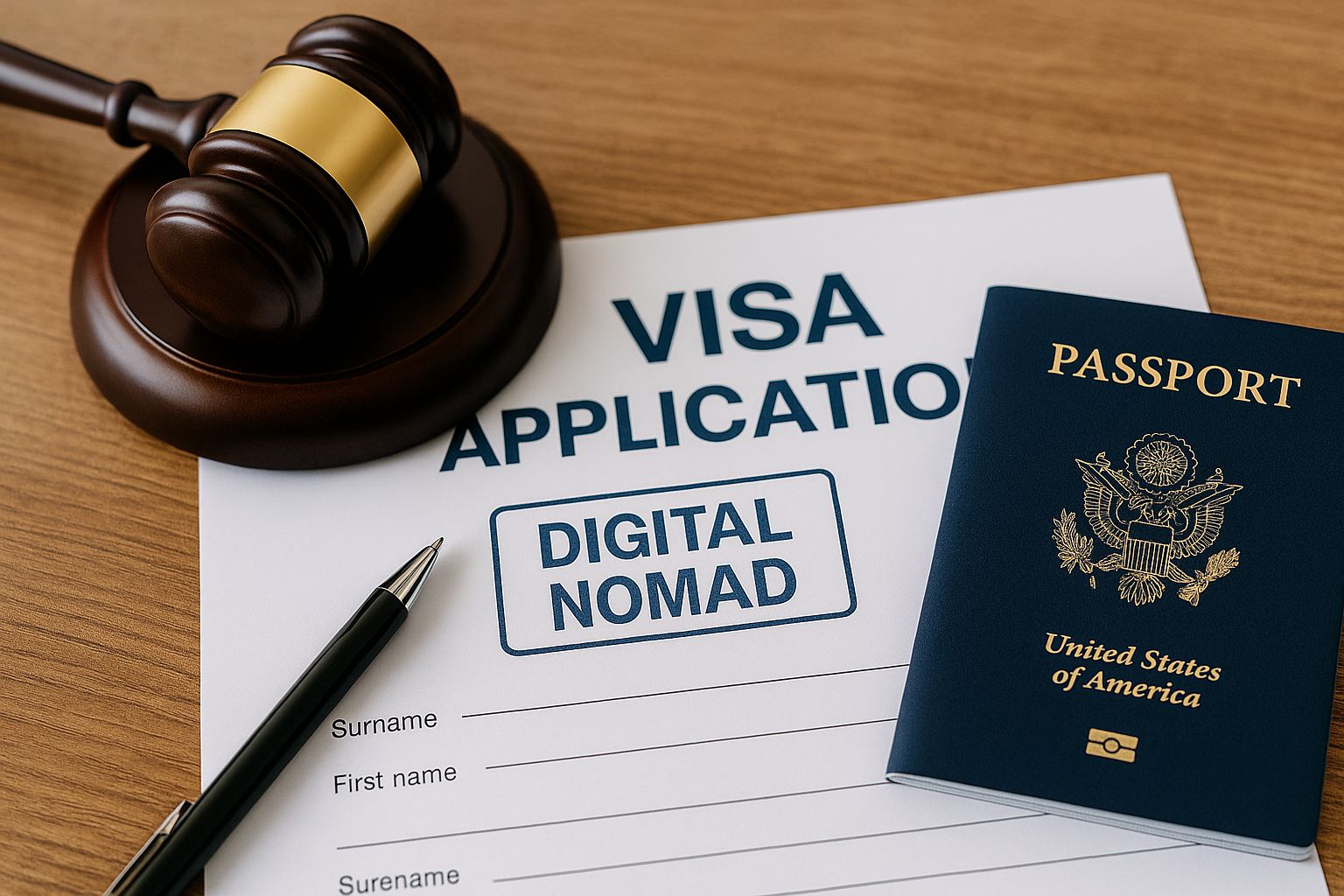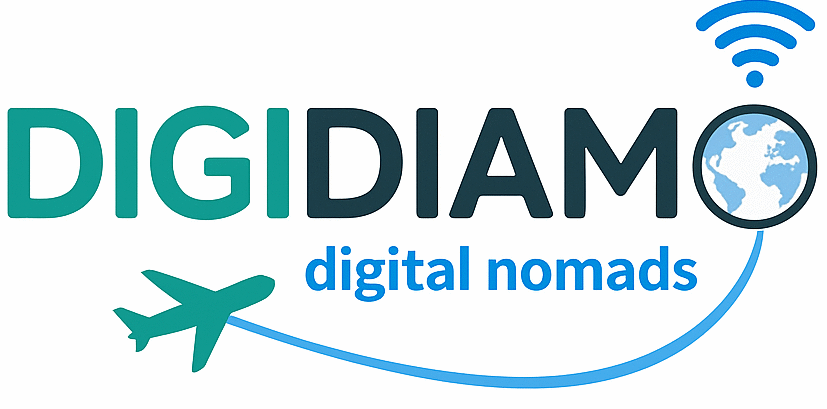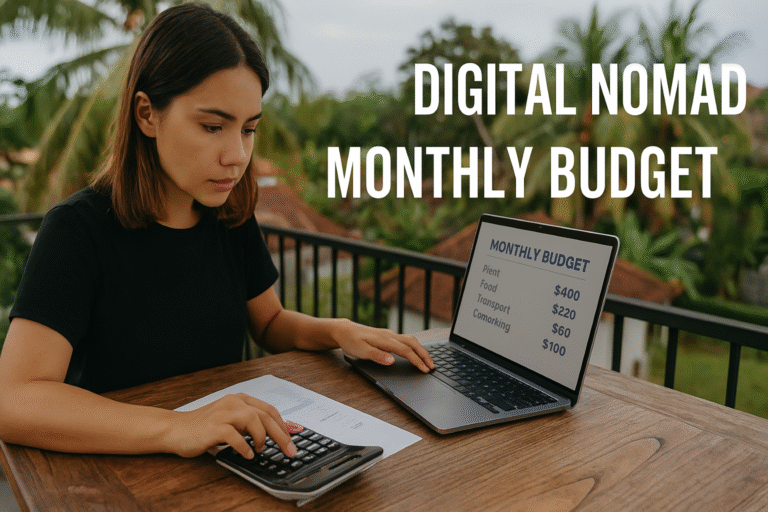Digital nomad visa vs tourist visa: Key differences
When I first started working remotely, I used tourist visas like most people do. It worked until it didn’t. Between short stays, confusing rules, and the stress of visa runs, I realized I needed something more stable. That’s when I started looking into digital nomad visas.
They’re not just another travel formality. They were designed for people like us those who live abroad while working online. If you’re not sure whether a digital nomad visa is worth the hassle, or if a tourist visa can still do the job, this breakdown should clear things up.

Length of stay
The biggest difference is how long you’re allowed to stay.
A tourist visa usually gives you 30, 60, or 90 days, depending on your nationality and destination. You might be able to extend it once, but it’s often complicated, unpredictable, or even prohibited.
A digital nomad visa, on the other hand, is designed for long stays. Most range from 6 months to 1 year, and many are renewable. A few even open the door to longer-term residency, especially in countries like Portugal or Spain.
If you’ve found a place you want to settle into, the nomad visa gives you the time to breathe.
And if you’re unsure where to go, a breakdown of the best countries currently offering digital nomad visas can help you explore your options more clearly.
Legal right to work remotely
This part surprises people: tourist visas don’t officially allow you to work, even if your income comes from abroad.
Most people assume “I’m not working for a local company, so I’m fine.” But technically, some countries view any kind of work as illegal on a tourist visa. Immigration agents don’t always ask, but if they do, and you say you’re working remotely, you could be denied entry or worse.
Digital nomad visas solve this problem. They give you a clear legal framework to live and work remotely, without hiding your laptop or making up excuses at the border.
You can open your laptop at a café without worrying about who’s watching.
If you’re still not sure what exactly defines a digital nomad visa, the full guide breaks it down clearly.
Application process
Tourist visas are usually easy. Some are granted automatically upon arrival. Others require a simple online form and proof of onward travel.
Digital nomad visas are more involved. You’ll typically need:
- Proof of income
- Remote work status (employment letter or freelance contracts)
- Health insurance
- Valid passport
- Bank statements
- Background check (sometimes)
It’s more paperwork, yes but it’s also more secure.
If you’re ready to start, a detailed guide on how to apply walks you through the entire process step by step.
Access to services
When you’re on a tourist visa, you’re just visiting. That means no access to public healthcare, no ability to rent long-term easily, and limited options for banking.
With a digital nomad visa, you can often:
- Register locally
- Get a tax number
- Sign long-term leases
- Access private or public health services
- Open a local bank account
You become a temporary resident instead of a passing tourist. That makes everyday life smoother and less stressful.
Tax implications
Many people worry that applying for a nomad visa will automatically make them taxable in the host country. That’s not always true.
In most cases, you only become a tax resident if you spend more than 183 days in a year in that country. Some digital nomad visas like those in Costa Rica or Croatia even exempt foreign income from local taxes.
With a tourist visa, you’re usually “off the radar,” but also in a legal grey area. With a nomad visa, you have clarity and the option to make things official if you stay long term.
If taxes are a concern, do your homework. Some countries are friendlier than others.
Stability and peace of mind
Living abroad on a tourist visa can feel unstable. You’re constantly checking expiry dates, booking visa runs, and hoping you won’t get questioned at the border. It works short-term, but it’s not relaxing.
A digital nomad visa gives you structure. You know how long you can stay, what’s expected, and how to renew if needed. It lets you build a routine, make local friends, maybe even learn the language without worrying about having to leave suddenly.
If you’re planning to stay more than a few months, it’s worth it.
When is a tourist visa enough?
That depends on your rhythm.
If you’re moving every 1–2 months, and you don’t mind the paperwork or risk, tourist visas still work.
They’re also fine if:
- You earn below the digital nomad visa thresholds
- You only need a short break from your base country
- You’re testing a new destination before committing longer
But if you’ve found a city that feels like home and you want to stay legally, work comfortably, and avoid headaches, the digital nomad visa is a better tool.
Work visa vs digital nomad visa
Let’s clear that up too.
A work visa is for people hired by a local company. It’s usually tied to a job offer, involves more bureaucracy, and limits your flexibility. You can’t just leave and work elsewhere without starting over.
A digital nomad visa keeps your freedom. You keep your clients or employer, earn from outside the country, and still get to stay for months or even years.
If you value location independence, this is the better choice.
Final thoughts
Tourist visas are useful. But they were never designed for remote work. If you’re serious about living abroad while earning online, a digital nomad visa gives you structure, legality, and peace of mind.
It’s not just about staying longer it’s about staying better.
And when you’re ready to apply, a full breakdown of the digital nomad visa application process is waiting for you.






